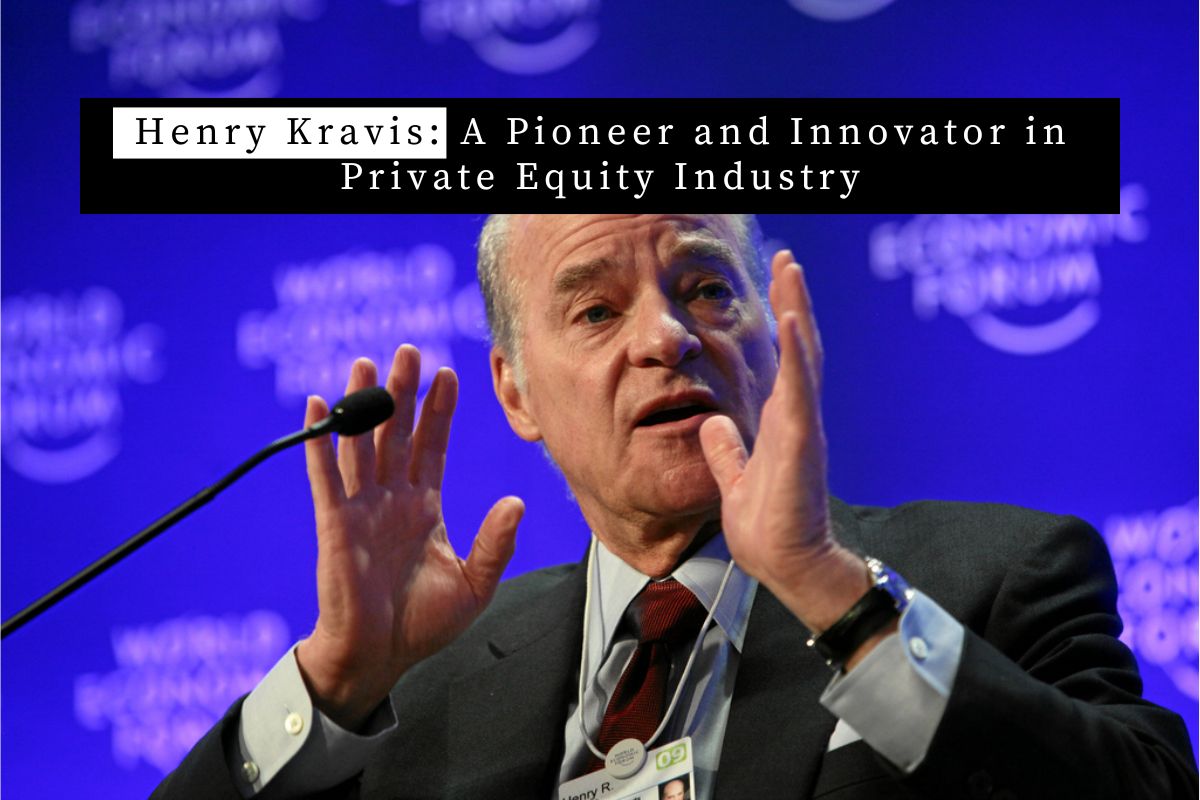Henry Kravis is a name that is synonymous with corporate titan, an icon in the world of finance and a pioneer who has helped define the private equity industry. Kravis was instrumental in creating a two-and-a-half trillion dollar industry, a war chest greater than the gross domestic product of many small countries, and has constantly pushed the envelope to make it better.
Table of Contents
ToggleEarly Life and Career
Kravis was born in 1944 in the oil patch of Tulsa, Oklahoma. His father was a petroleum engineer who made his family a fortune. Kravis’s road to success took him from prep school in the Northeast to Southern California in 1963. He majored in economics at Claremont McKenna College, where he gained an understanding of the disruptive changes that were taking place in society.
Kravis returned to the heart of the business world, New York, after an internship picking stocks at a money management firm. His father urged him to go back to school in 1967. Kravis enrolled in Columbia’s MBA program, but his focus was elsewhere. He wanted to do deals and make big bucks. He did not want to stay at Columbia once he got there. It was only when his former boss allowed him to keep his hand in the business in his spare time that Kravis decided to pursue the degree.
Kravis and Private Equity
Kravis got his job at Bear Stearns through an opportunity presented by his first cousin, George Roberts, who was an analyst at the trading shop. They both shared a brilliant mind for business. Kravis’s timing was amazing in that he lucked into a job with Jerry Kolberg, who was doing these strange little deals no one had heard of called bootstrap deals, later to be known as leverage buyouts.
The acquisition of industrial parts company, Income International, for nearly 92 million dollars brought in the largest fee Bear Stearns had ever seen. Within three years, Kravis ran his own deals and became a Bear Stearns partner at 30 years old. Kravis’s skill set was ideally suited for LBOs as he had a very accomplished and cold analytical eye.
The Battle for RJR Nabisco: When Wall Street Titans Collided
The leveraged buyout (LBO) of RJR Nabisco in 1988 was the largest corporate takeover in history at the time, and it was also one of the most dramatic. Ross Johnson, CEO of RJR Nabisco, was facing a stagnant stock price and a failed product launch for the company’s smokeless cigarette. Going private with an LBO seemed like a chance to turn things around, as well as an opportunity for Johnson to make a personal fortune.
Johnson and his management team partnered with Shearson Lehmann, an investment bank, and proposed a $17 billion leveraged buyout of RJR Nabisco on October 20, 1988, offering $75 per share. However, Henry Kravis, co-founder of Kohlberg Kravis Roberts (KKR), a private equity firm specializing in LBOs, had also been eyeing RJR Nabisco for a year and was outraged by the upstart nobodies’ audacity to propose a deal that would be the biggest ever in the industry.
Kravis shocked the financial world with his own bid of $20 billion just four days later, raising the price to $90 a share. This move triggered a bidding war between Johnson and Kravis, with both sides trying to outdo each other. The media loved the spectacle, and the round-the-clock publicity made it a must-watch for the public.
Kravis and Roberts were locked in a marathon last-minute bidding session six weeks after Johnson’s initial offer. Their final bid was a staggering $109 per share, nearly double its initial price, and the RJR Nabisco board of directors announced Kravis as the winner of the day on November 29, 1988. KKR made $75 million in fees, clearly winning, and took Henry Kravis to the pinnacle of his reputation on Wall Street.
However, the spoils were short-lived, and the aftermath of the mega-deal was catastrophic. The pressure to make a return for investors was high, and the firm faced challenges due to cigarette price wars and tobacco litigation, generating a dismal annual rate of return of less than one percent. The firm ultimately decided it was no longer worth holding and sold off RJR Nabisco in 1995.
Despite his victory, Kravis faced a family tragedy when his 19-year-old son Harrison was killed in a car crash in 1991. His personal life also made headlines when he divorced his wife of seven years, Carolyn Rome.
Looking back, the battle for RJR Nabisco demonstrated the intense rivalry and competition between the titans of Wall Street. Although Kravis emerged as the winner, the outcome was not as successful as one might have hoped. The battle also highlighted the pitfalls and risks of LBOs and the importance of due diligence when acquiring a company.
Conclusion
In conclusion, Henry Kravis is a prominent name in the finance industry, known for his contributions to private equity and his leadership at Kohlberg Kravis Roberts (KKR). His life story and career path demonstrate his sharp business acumen and ability to recognize opportunities. Kravis is one of the architects of the private equity industry and has constantly pushed the envelope to make it better. The RJR Nabisco takeover remains one of the most significant events in Wall Street history and, although the outcome was not as successful as expected, it demonstrated the importance of due diligence when acquiring a company. Despite the ups and downs, Kravis’s legacy is enduring, and his contribution to the world of finance is unquestionable.
Further Reading and Sources:
Berkshire Hathaway Letters to Shareholders 1965-2021
Additional Resources
To keep learning and advancing your career, we highly recommend these additional resources:
7 Financial Models Used by Investment Bankers












